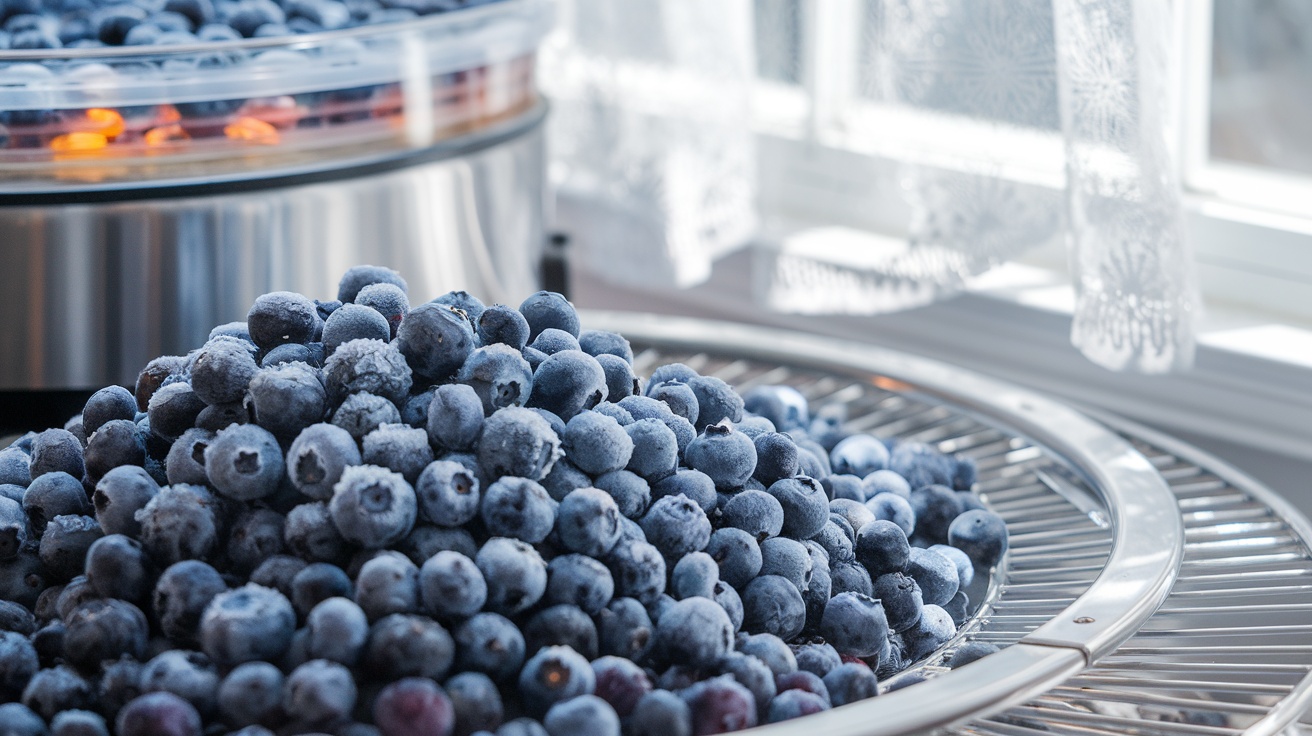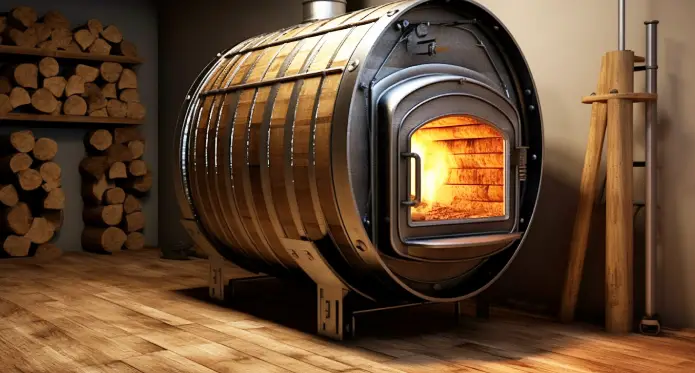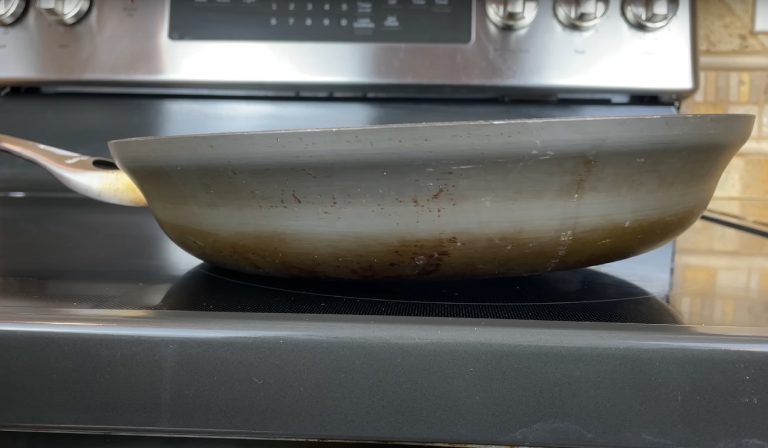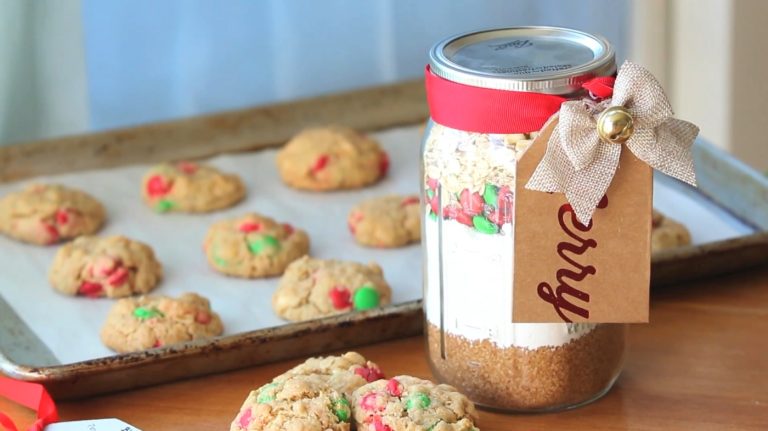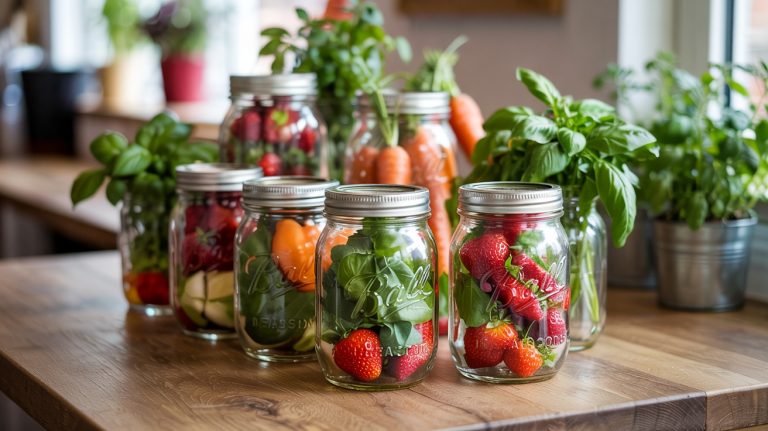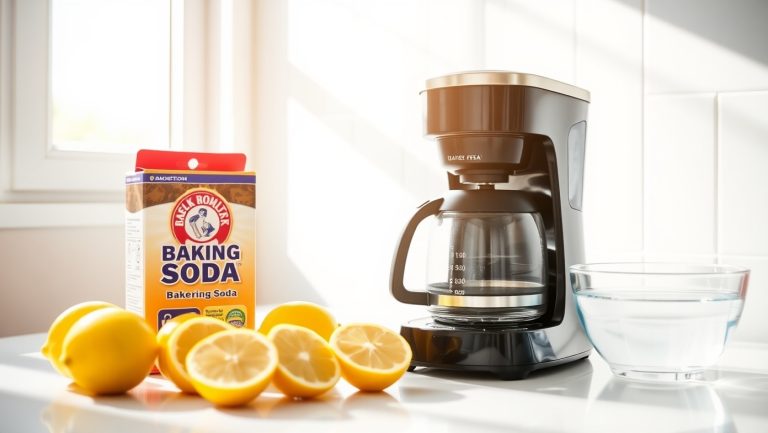How to Dehydrate Frozen Blueberries? Complete Guide
To dehydrate frozen blueberries, start by placing them in a single layer on dehydrator trays. Set your dehydrator to 135°F (57°C) and expect a drying time of 8 to 18 hours.
Check for a shriveled, leathery texture when done. Allow the blueberries to cool in the dehydrator for 30-45 minutes before storing them in airtight containers away from direct sunlight. If you want to explore creative uses and storage tips, there’s more to discover.
Key Takeaways
- Use a quality dehydrator set to 135°F (57°C) for optimal moisture removal from frozen blueberries.
- Arrange blueberries in a single layer on dehydrator trays to ensure even drying.
- Monitor drying time, which typically ranges from 8 to 18 hours, checking for a leathery, shriveled texture.
- Allow dehydrated blueberries to cool for 30-45 minutes in the dehydrator before storing.
- Store cooled blueberries in airtight containers in a cool, dark place for up to a year.
Equipment You Will Need to Dehydrate Frozen Blueberries
To successfully dehydrate frozen blueberries, you’ll need a quality dehydrator with features that promote even air circulation, like mesh trays.
Additionally, selecting the right storage containers, such as airtight options or vacuum sealers, is essential for preserving your dried blueberries.
Each piece of equipment plays an important role in achieving ideal results. Ensuring your dehydrator maintains optimal temperature control can greatly influence the quality of the dried blueberries.
For best results, consider a dehydrator with multiple trays to maximize your drying capacity.
Preparing the Dehydrator
Before you start dehydrating frozen blueberries, you need to verify your dehydrator is properly prepared for best results.
A well-arranged setup guarantees even drying and enhances the quality of your finished product. Here’s what you should do:
- Use a food dehydrator with multiple trays for efficiency.
- Spread blueberries in a single layer to improve airflow. Proper air circulation is essential for preventing stickiness during the drying process.
- Remember that drying times can vary, typically lasting between 8 to 18 hours. Frozen blueberries can be used without blanching, making the process even quicker.
- Ensure you have sufficient space to handle large batches without crowding.
Setting the Right Temperature
Setting the right temperature is vital for achieving ideal results when dehydrating frozen blueberries. The recommended temperature for dehydration is 135°F (57°C), as this provides even drying while preserving the berries’ vibrant color and flavor.
If your dehydrator has alternative settings, you might consider using 115°F for a longer drying process. For oven dehydration, temperatures between 130-200°F can be employed, but precise control is often challenging.
Maintaining consistent low temperatures helps prevent over-drying and retains nutrients. Remember, a stable temperature is essential; monitor and adjust as needed.
To guarantee quality, aim for a shriveled, leathery texture when the berries are done, rather than damp or sticky.
Dehydrating Process Step-by-Step
With the temperature properly set, you can now begin the dehydrating process for your frozen blueberries.
Start by placing the berries in a single layer on your dehydrator trays, ensuring the trays have small holes to prevent any mishaps.
- Experience the delight of perfectly dried blueberries.
- Enjoy the rich, concentrated flavors emerging through dehydration.
- Relish the satisfaction of preserving nature’s bounty, as this method allows you to extend shelf life significantly. Properly dried blueberries can be stored for a long time without losing their flavor or nutritional value, thanks to their safe storage conditions.
- Anticipate the versatility of dried blueberries in your recipes.
Set your dehydrator to 135°F (57°C) and let the process take its course.
Depending on moisture content, it’ll typically take between 8 to 18 hours.
Remember to check occasionally, ensuring even drying while preventing over-drying for ideal results.
Checking for Doneness
As you near the end of the dehydration process, it’s important to assess whether your blueberries are adequately dried. Properly dehydrated blueberries should exhibit a leathery texture and appear shriveled, with noticeable shrinkage.
To confirm doneness, place them in a sealed container and check for condensation after a few hours; no condensation indicates they’re fully dried.
Verify the blueberries aren’t sticky or moist, as this could signal under-drying. Additionally, ensure that the blueberries have reached a moisture level of no more than 10% to achieve the best texture.
Conversely, be cautious of over-drying, which results in brittleness. Visual inspection and tactile testing are vital—handle them without gloves to gauge stickiness.
Cooling and Storing Dehydrated Blueberries
Cooling your dehydrated blueberries properly is essential to prevent moisture buildup that can spoil your efforts.
Choosing the right airtight container, such as mason jars or Mylar bags, guarantees that your berries stay fresh for longer.
Additionally, proper storage conditions—storing them in ideal conditions—away from light and heat—will maximize their shelf life and maintain quality. Finally, properly stored blueberries can last up to a year in airtight containers.
Cooling Process Importance
Ensuring that dehydrated blueberries cool properly is essential for maintaining their quality and longevity.
Allowing them to cool prevents moisture accumulation and stabilizes their texture, ensuring they remain flavorful and nutrient-rich.
Here are some key reasons to prioritize the cooling process:
- Preserves vibrant color and delicious flavor
- Prevents sticky textures that signal moisture issues
- Protects nutrients for better long-term health benefits
- Aids in achieving a consistent drying process
Airtight Container Choices
Choosing the right airtight container for your dehydrated blueberries is essential for preserving their quality and extending their shelf life. Glass containers are preferred due to their non-reactive nature, ensuring no flavors or chemicals leach into your blueberries.
Look for containers with tight-fitting lids to block moisture and air. Size matters too; choose a container that accommodates your blueberries without overcrowding, allowing for proper air circulation.
Additionally, vacuum sealing your blueberries can significantly extend food longevity, further enhancing their shelf life. Avoid clear containers, as they expose your blueberries to light, which can degrade their quality.
While airtight plastic containers work, glass is the superior option. For enhanced storage, consider vacuum sealing, which removes oxygen and moisture, further prolonging freshness.
Additionally, storing your dehydrated blueberries in an airtight container is crucial for maintaining their quality over time. Always label your containers for easy identification and tracking.
Optimal Storage Conditions
To maintain the quality of your dehydrated blueberries, it’s crucial to cool them properly before storage. Allow them to cool completely in the dehydrator for 30-45 minutes. Properly stored dried blueberries can maintain quality for 12 to 18 months under ideal conditions.
Consider these ideal storage practices:
- Store in a cool, dark location to preserve flavor and nutrients.
- Avoid direct sunlight to prevent degradation.
- Monitor for moisture during the initial storage period.
- Use clean, dry cooling racks if cooling outside the dehydrator.
Frequently Asked Questions
Can I Dehydrate Blueberries Without a Dehydrator?
You can definitely dehydrate blueberries without a dehydrator. Curiously, dehydrated fruits can retain about 90% of their nutrients.
You can use your oven by setting it to a low temperature, ideally between 135°F and 200°F. Line a baking sheet with parchment paper, spread the blueberries evenly, and keep an eye on them to prevent overcooking.
How Can I Tell if Blueberries Have Gone Bad?
To tell if blueberries have gone bad, check their texture and appearance. If they feel mushy or have a soft texture, they’re likely spoiled. Look for discoloration, bruising, or leaking juice, which indicates rot.
Mold growth, a slimy feel, or an off-smell are also signs of spoilage. If you notice any of these issues, it’s best to discard the affected berries immediately to avoid consuming anything unsafe.
What Is the Nutritional Value of Dehydrated Blueberries?
Dried blueberries pack a nutritional punch, offering about 127 calories and 27 grams of sugar per quarter cup.
They provide 3 grams of fiber, which aids digestion, and contain 9.5 mg of vitamin C, supporting tissue repair.
Additionally, you’ll find 23.8 micrograms of vitamin K, beneficial for bone health. While they retain some antioxidants, the drying process reduces their overall content compared to fresh blueberries, making them a concentrated, calorie-dense option.
Can I Mix Blueberries With Other Fruits When Dehydrating?
Oh sure, why not create a fruit cocktail in your dehydrator? Mixing blueberries with other fruits isn’t just an option; it’s practically a culinary revolution!
Just remember, each fruit has its drying quirks—some need higher temps while others can’t handle the heat. Maintain proper spacing to avoid overcrowding, and make certain every fruit is dried sufficiently before storing.
How Do I Prevent Blueberries From Sticking Together?
To prevent blueberries from sticking together during dehydration, spread them in a single layer on mesh trays. This allows for proper airflow, reducing moisture retention.
Pat them dry before placing them in the dehydrator to minimize excess moisture. After dehydration, let the blueberries cool completely in a single layer to avoid condensation. Finally, store them in airtight containers to maintain their dryness and prevent clumping over time.
Enjoy the Sweetness of Dehydrated Frozen Blueberries All Year Long
In summary, dehydrating frozen blueberries reveals a treasure trove of flavor and nutrition for your culinary adventures. By following the outlined steps, you can transform these vibrant berries into a delightful, shelf-stable snack that bursts with the essence of summer.
Picture each bite as a tiny explosion of sweetness, reminding you of sun-drenched days. With a few simple techniques and a bit of patience, you’ll enjoy the fruits of your labor long after the season ends.

